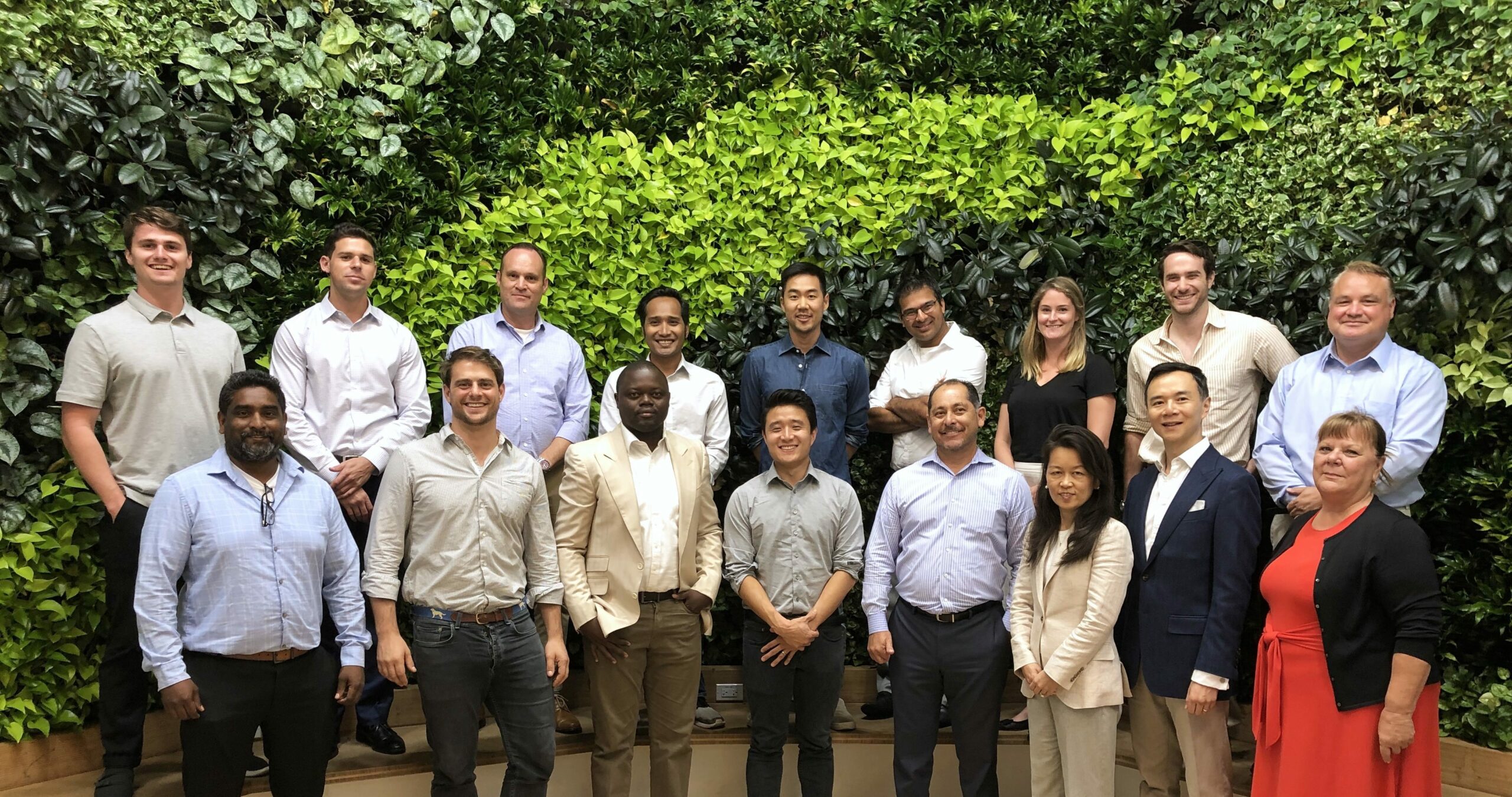
We just selected our fourth cohort of LACI Innovators and we chose 18 exciting companies to spend one year with us. We are inspired by these dynamic and dedicated founders—many from diverse backgrounds—who are revolutionizing clean energy and the energy-transportation nexus and tackling the climate crisis head-on. Throughout the recruitment process, getting to know the companies and meeting with founders, we saw an interesting trend that we think spells good news for cleantech overall.
We saw that the cleantech innovation ecosystem in California is growing, thanks in large part to the dedication of the California Energy Commission (CEC), which has funded programs to nurture cleantech like the LACI Innovators Program over the past several years. This year we received 41 applications for the Innovators Program, and accepted 18 companies into the cohort. This is almost more than the past three cohorts combined! We saw an increase in the number, stage and quality in clean energy companies in the region since we began recruiting in 2017. Additionally, this year 27% of the applicants were referrals from partner organizations, programs or funds, further showing that a distinct innovation ecosystem has developed in Southern California.
Many of the startups in this cohort work with our network partners, from the CEC, Caltech’s Rocket Fund, CalSEED, other universities and Cleantech Open West. Grants from the CEC are helpful for nascent startups, like Green Light Labs, who has a pilot with LA County employees to personalize car shopping by recording trips and then computing the fuel consumption, costs and charging needs if those trips had been in an EV. Caltech’s FLOW Rocket Fund also supports the ecosystem, and several startups in our new cohort are recipients, such as NeoCharge, which offers a 220 volt splitter plus software for home renters and saves thousands of dollars in energy costs and and enables grid flexibility for utility companies (NeoCharge was also a California Climate Cup semi-finalist!). Many of the startups selected for this cohort also received funding from CalSEED, such as Pronoia, Luminescent Energy, Radii Robotics, SolarFlexes.
We found that this growing ecosystem is particularly distinct in Southern California, in part because Southern California has some of the most dynamic utilities which are exploring new programs and investing in transportation electrification and clean energy. For example, SCE’s Clean Power and Electrification Pathway bold vision and LADWP’s announcement not to replace three gas-fired power plants in the region and instead replace them with renewable energy sources and storage send clear signals to the market that there is opportunity for innovation. This is part of the reason that Green Light Labs, a software platform to accelerate EV adoption, and SolPad, a battery with microgrid capabilities for solar, both Cohort 4 Innovators, have relocated to Southern California from Northern California.
The full cohort is listed below:
Alacharge
Alacharge is an auto-lock charging station for electric scooters to serve as a charge point as well as pick-up located at private parking structure and lots. Stations will cut charging costs for the scooter companies, an added source of revenue for property owners, and provide a scooter management solution for cities.
Camus Energy
Camus is building a three pronged cloud system to orchestrate distributed grid resources; deploying the first two products – situational awareness/real-time analytics- $300k /year and orchestration platform/optimization engine first; smaller vendors (CCAs) then to utilities; eventually will incorporate marketplace aspect and reach out to ISOs; will partner with device aggregators like Chargepoint and Nest.
CrossnoKaye
CrossnoKaye retrofits existing HVAC-R systems and enables them to dynamically modify their load profile in response to grid needs. They create algorithms and models for HVAC-R processes and shift energy around peak pricing. This balances the system’s efficiency with grid needs to both reduce and reshape building loads.
Through current pilot projects, their system has proved a two year ROI and typically saved between 25-40% on initial electricity bill with increased savings over time.
Drought Diet Products
Drought Diet Products turns irrigation into a grid management asset through AI. The system’s AI responds to overcapacity on the grid from renewable energy generation by pulling short intervals of power to power irrigation system. Their overall goal is to smooth grid load during the day through powering irrigation.
Currently, they are testing their energy concept and working with multiple universities on developing the technology. Because a part of the product, the irrigation component, is tested and manufactured, they are focusing on the energy aspect of their final product.
EVE Energy
Eve Energy Ventures is a smart charging scheduling platform that allows drivers to find and reserve a shared charger in offices and apartments. The platform also is optimized to provide key benefits for the property owners through increased revenue and reduced costs.
Their technology is an app sold to property managers or owners to enroll existing charging infrastructure. In pilots to date, they have seen EV drivers gain twice the number of opportunities to charge, leading to benefits for the owners of the chargers. Currently, they are selling systems to multi-unit dwellings. Through a partnership with Schneider Electric they have established pilot systems to feedback on their beta platform for further development.
Green Light Labs
Software platforms to accelerate EV adoption. MyGreenCar app personalizes car shopping. It automatically records trips in your current car, then computes the fuel consumption, costs, or EV range viability and charging needs if those trips were made in any vehicle you’re considering to buy. MyFleetBuy solution provides analytics for greening and electrification of fleets who are purchasing hundreds of vehicles at a time. It identifies the cost savings, range viability, and charging needs to deploy EVs across entire fleets.
Jump Watts
Jump Watts is developing a mobile charging solution for electric bikes and scooters. Through their three unique products, a trailer, van and bicycle unit, Scooter Chargers can lease Jump Watts products to charge LEVs on-the-go.
They are currently in product development of two products: the trailer and van concepts. The trailer prototype is finishing testing and will be close to an MVP by Q4 – they hope to launch a final product at the beginning of 2020. The van prototype is still early in its prototyping phase.
Lilypad Energy
Lilypad Energy is currently building a method of relaying curtailment requests from aggregators through a software that simplifies the enrollment and operation of EVs, home batteries, and other IoT. Lilypad Energy can streamline the enroll of ‘assets’ into DR / GS ‘programs’, and monitor curtailment by reading an asset’s energy consumption. In doing so, they are looking at building infrastructure for a microgrid in the Santa Barbara region.
Currently, Lilypad is working on their beta product through development of the equipment facing API and the API for scheduling coordinators/grid service providers. They have two pilots currently deployed in Santa Barbara.
Luminescent Energy
Luminescent Energy is developing power-generating windows featuring both power generation and thermal energy management. It uses micro-solar cells embedded into the window technology while maintaining high visual acuity and quality. The main value of this technology is a 5% higher power conversion efficiency of other luminescent devices while remaining cost competitive and reliable over time.
The technology was developed at Caltech through an ARPA-e grant. The team is now finishing durability and lifetime testing while concurrently building out their business and market strategy.
NeoCharge
NeoCharge has developed a 220 volt splitter that provides easy EV charging access at home. It is a solution for both home renters and owners, and enables grid flexibility. The technology includes software with smart functionality that allows owners to save money and use clean energy from the grid.
With 31 units sold through early adopter channels, NeoCharge is engaged in getting their UL certification and tracking current deployed units for product development.
Open Source Strategies
Open Source Strategies’s “Opentaps SEAS Platform” monitors the energy assets of a property to centralize all data connected to the status of energy equipment and infrastructure. Based on an open source software developed by the DOE for smart grid and building efficiency, this cloud-based software integrates the data to optimize the energy efficiency of a building and calculate the real-time value of that energy. This creates a data stream to securitize energy efficiency projects and renewable energy investment. It’s like a home equity loan for installed equipment.
Currently, Open Source Strategies has a large pilot project with a major East Coast municipality to enroll 60 buildings onto their software. With this pilot they are working on algorithms to tag and analyze the data.
Pronoia
Pronoia is developing a new type of battery that utilizes a proprietary Quantum-Dipole technology. This innovation has a 10-100x increase in energy density compared to existing storage technologies. Given the high density, they predict their system will have the lowest kWh price worldwide.
The technology has been in development by Dr. Wooyong Lie for over 15 years. Currently, they are 8 months away from their prototype and are expanding their team to finish the R&D.
Radii Robotics
Radii Robotics has designed a drone robot to inspect wind turbines with game changing hardware and software components.
- With a unique robotic arm, the drone can use ultrasonic testing to detect structural problems and perform basic maintenance. Ultrasonics can detect up to 85% of issues for a turbine where as visual inspection detects 15%.
- Their software has 1) special positioning technology 2) collection and reporting capability and 3) a discussion board for drone operators, asset owners, and OEMs to collaborate on infrastructure problems.
The team is currently building upon their foundational platform and looking to test and pilot in Q2/Q3 of 2020.
Ranier Solar Panel
Ranier Solar Panel is developing a proprietary bifacial solar panel on a proprietary mount and frame. They predict that their unique configuration can offer 20% more power per ft² than traditional panels by producing power longer in the day. The main value proposition offered by their technology is a higher power output over time therefore lowering the lifetime cost.
They are currently deep in R&D to develop a final technology through a partnership with ASU’s Solar Power Lab. Ranier plans on developing 10 prototype units at the APC to test at the ASU facility.
SolarFlexes
The SolarFlexes rapidly-installed PV array is a ground-mounted system that delivers cost-savings through process innovation to reduce all inputs for ground-mounted PV array installations. The majority of the system’s manufacturing value is added in a factory setting where lean, six-sigma processes maximize manufacturing efficiency and quality control while ensuring the system’s structural integrity and durability. The prefabricated array is transported to the project site in sections using standard shipping containers and rapidly installed using only a car/truck, trailer, and hand tools.
Currently, SolarFlexes is finalizing the CAD designs and looking for funding to begin engineering and testing. The team is interested in using the APC for prototyping efforts.
SolPad
SolPad provides solar storage and management solutions, Renewable Solar + Storage + Intelligent Management, for small scale home and commercial energy systems. Their cloud application and mobile app control system allows it to function on and off the grid.
By selling through residential installers and developers, SolPad seeks to provide cost-effective and flexible power alternatives to people living in expensive power regions around the world. This mission has led to a $61M PO in Puerto Rico through the largest solar developer in the area.
Currently, SolPad is finishing up UL certification and expect to complete it by Q4. Once UL is in place, they will install pilots in Palo Alto then deploy in Puerto Rico.
Substance Power & Mobility
Substance Power & Mobility seeks to build industrial-grad, lithium-ion based, energy storage hardware pieces to be deployed interchangeable between buildings and fleets. Their “hardware ecosystem” deploys the components through creating modular lego-like batteries for both stationary and mobile applications.
The goal for the technology is to create a comprehensive sustainable energy solution for industrial facility & fleet operations. Currently, they are in very early stages of CAD design and look at continuing product development until Q3 of 2021.
TBM Designs
TBM Designs has invented the Invert Self-Shading Window installments using smart thermobimetal. By installing their product inside the cavity of a standard Insulated Glass Unit (IGU), it can dynamically reduce heat gain at the surface of the building envelope, thereby reducing air-conditioning by over 15%, while maintaining light quality. Invert Windows operate autonomously and don’t require any power; it “uses no energy to save energy”.
The innovation was developed by an architecture professor at USC. Through partnering with window manufacturers, they see their product to have the biggest impact on large scale buildings with large window surface.
Currently, they are in the final stages of product development, and are now shifting towards a final commercial product development.


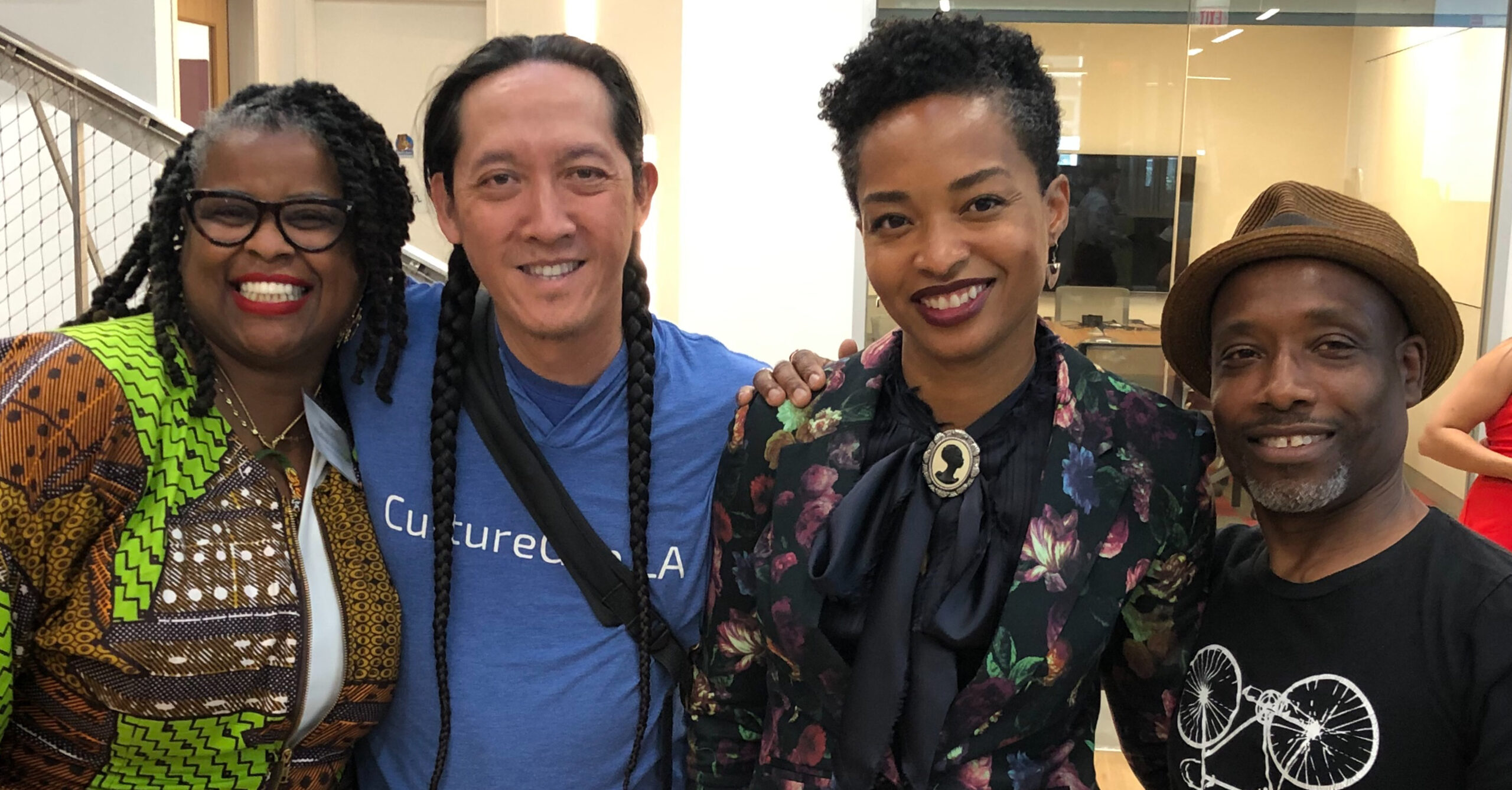
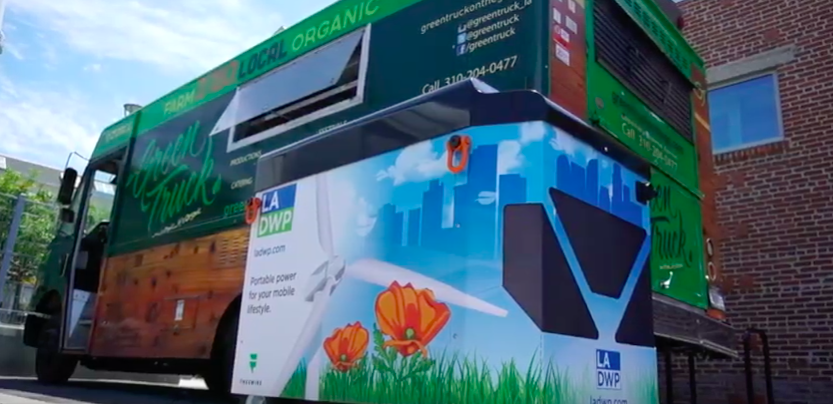



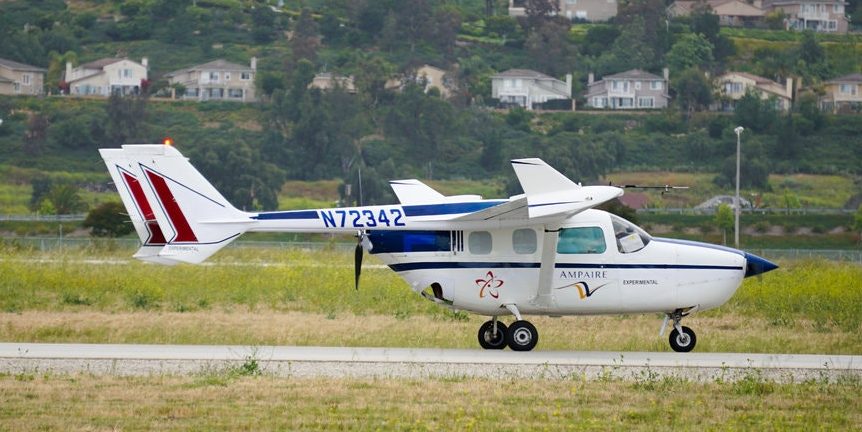
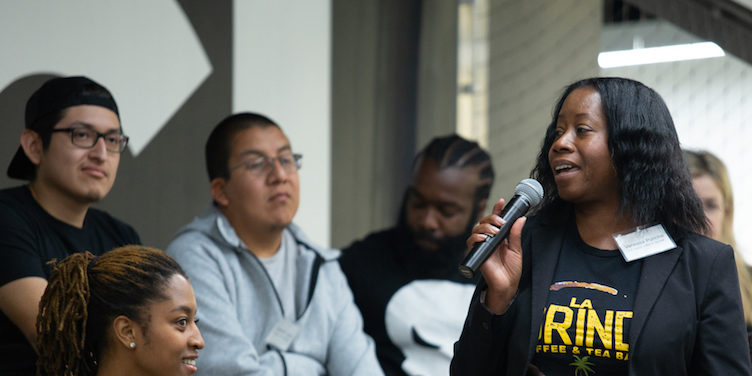
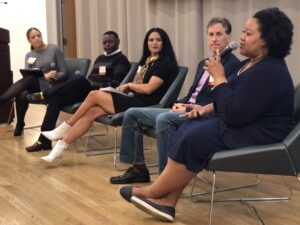
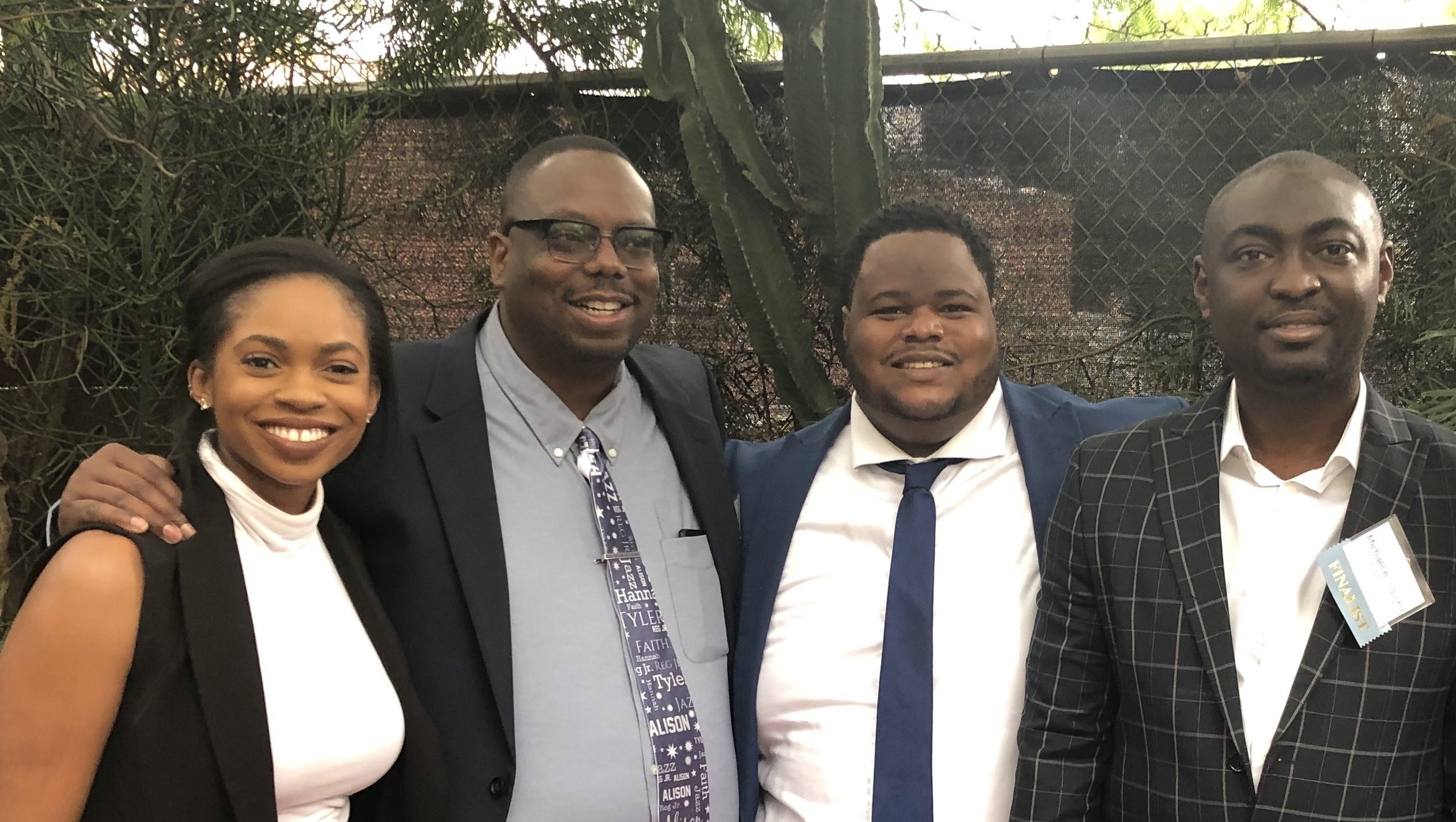
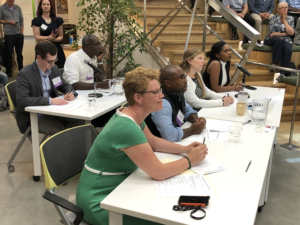 Corporate and startup innovators from around the world are responding to these market signals and demonstrating to California’s policy makers how their visionary work is resulting in real action around clean energy and smart grid infrastructure, the urban energy-transport nexus and zero emissions tr
Corporate and startup innovators from around the world are responding to these market signals and demonstrating to California’s policy makers how their visionary work is resulting in real action around clean energy and smart grid infrastructure, the urban energy-transport nexus and zero emissions tr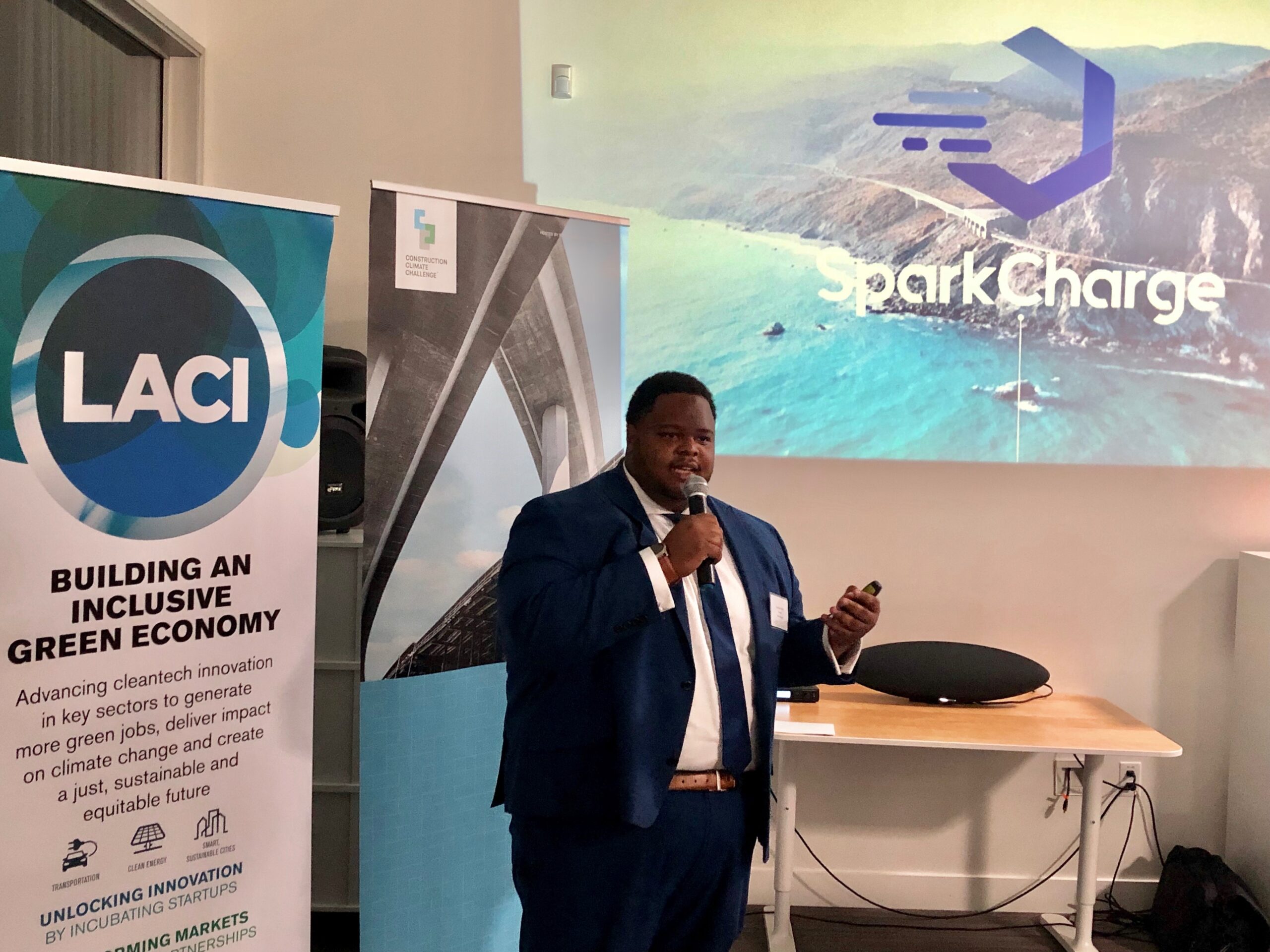
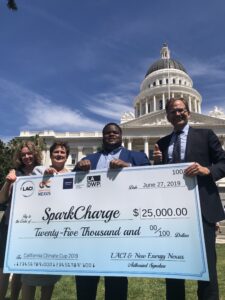 Los Angeles, June 27, 2019. The Los Angeles Cleantech Incubator (LACI) and New Energy Nexus announce SparkCharge as the winner of the 2019 California Climate Cup and recipient of the $25 thousand dollar cash prize. The California Climate Cup is sponsored by
Los Angeles, June 27, 2019. The Los Angeles Cleantech Incubator (LACI) and New Energy Nexus announce SparkCharge as the winner of the 2019 California Climate Cup and recipient of the $25 thousand dollar cash prize. The California Climate Cup is sponsored by